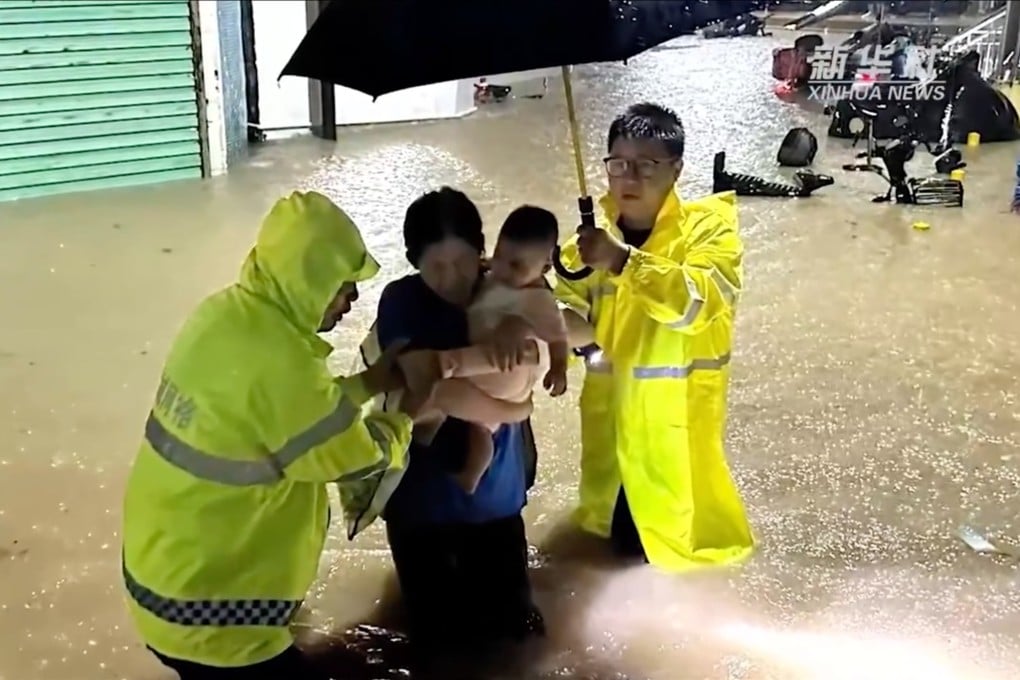Shenzhen flooding: officials in China close schools and release reservoir water amid heavy rain from Typhoon Haikui
- Amid record-breaking rain in southern China, authorities caution people to stay home where possible while Longgang district opens 151 emergency shelters
- Former water-treatment engineer says the city has a decades-long history of flooding that could be mitigated with better weather forecasting

With a red alert warning – the highest in a four-tier system – in place on Friday, local authorities cautioned people to stay home as much as possible and seek official aid if needed.
Shenzhen weather bureau said that by 10.30am Friday, a monitoring station in Luohu district received a record-breaking 526.3mm (20.7 inches) of rainfall in the previous 24 hours.

On Thursday evening, Shenzhen announced a red alert and urged emergency measures be taken to defend against the storm. Two stops on the No.16 metro line, which passes through Longgang district in the eastern part of the city, stopped operating because of flooding risks.
The district government warned of potential flooding around Longgang Zhongxincheng, the most prosperous commercial area in the region. Meanwhile, 151 indoor emergency shelters in the district were opened to the public.